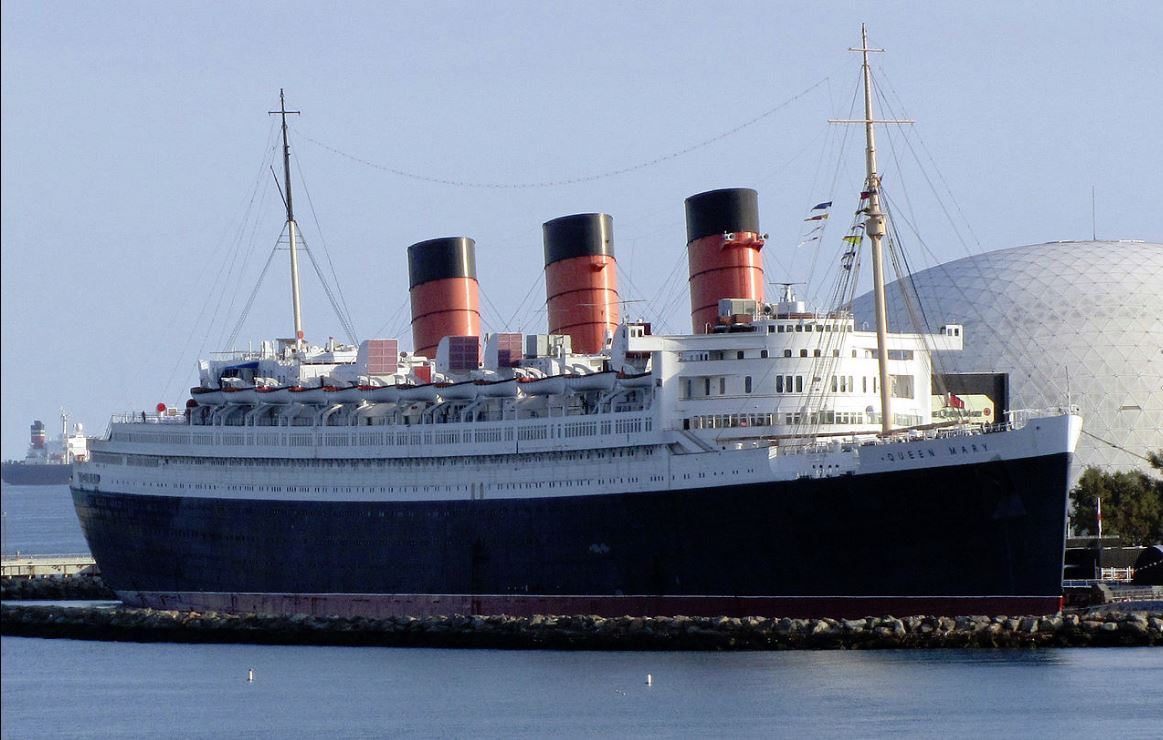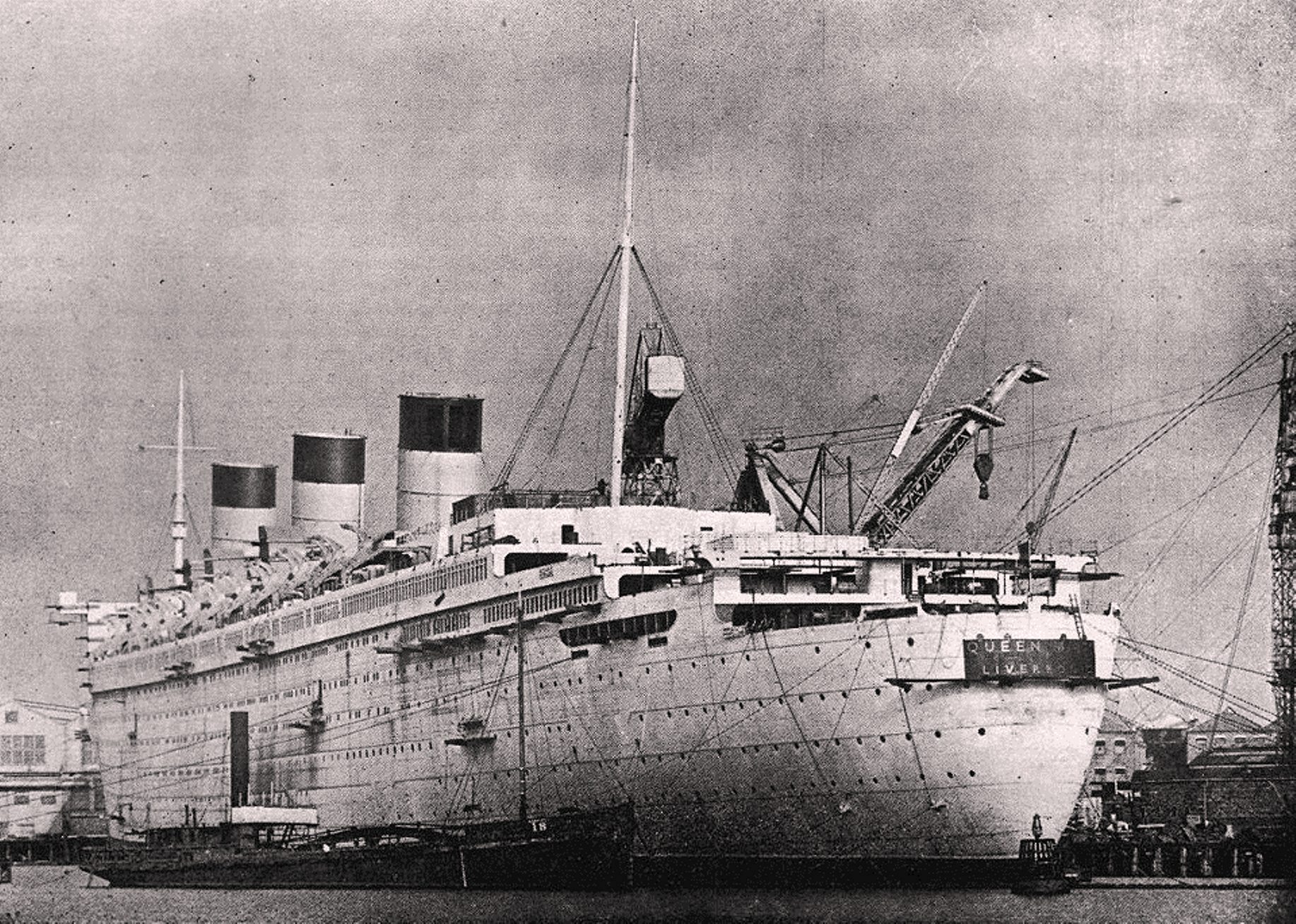Difference between revisions of "HMT Queen Mary"
From Our Contribution
(→Suez to Fremantle via Massawa & Maldive Islands 24 January - 18 February 1943) |
(→Fremantle to Middle East 9 - 23 September 1941) |
||
| Line 59: | Line 59: | ||
* [[Len Malarkey]] | * [[Len Malarkey]] | ||
* [[Victor Henry Mead]] | * [[Victor Henry Mead]] | ||
| + | * [[Frederick Thomas Orton Miller]] | ||
* [[John William Pryor]] | * [[John William Pryor]] | ||
* [[Harold Jack Spencer]] | * [[Harold Jack Spencer]] | ||
Revision as of 23:22, 22 December 2022
Contents
- 1 Remarks
- 1.1 Soldiers carried
- 1.2 Cape Town to England 30 May - 17 Jun 1940
- 1.3 Fremantle to Bombay 25 October - 7 November 1940
- 1.4 Fremantle to Middle East 9 - 23 September 1941
- 1.5 Fremantle to Port Tewfik, Egypt 7 - 22 November 1941
- 1.6 Suez to Fremantle via Massawa & Maldive Islands 24 January - 18 February 1943
Remarks
The RMS Queen Mary is a retired British ocean liner that sailed primarily on the North Atlantic Ocean from 1936 to 1967 for the Cunard Line – known as Cunard-White Star Line. Along with RMS Queen Elizabeth she was to provide a weekly express service between Southampton, Cherbourg and New York. H=er keel was laid on 27 Dec 1930
With the outbreak of the Second World War, she wasrequisitioned by the Ministry ofShipping on 1 Mar 1940, and converted into a troopship to ferry Allied soldiers during the war. On 2 October 1942, Queen Mary accidentally sank one of her escort ships, slicing through the light cruiser HMS Curacoa off the Irish coast with a loss of 239 lives. Queen Mary was carrying thousands of Americans of the 29th Infantry Division to join the Allied forces in Europe.
She resume commercial service during July 1947 before leaving Southampton for the last time on 31 October 1967 and sailed to the port of Long Beach, California, United States, where she remains permanently moored serving as a tourist attraction featuring restaurants, a museum and a hotel.
Soldiers carried
Cape Town to England 30 May - 17 Jun 1940
Fremantle to Bombay 25 October - 7 November 1940
2/16th Battalion
Fremantle to Middle East 9 - 23 September 1941
Boarded 6th, sailed 9th September
- Claude Raymond Anderson
- Harry Alfred Curtis
- William George Davis
- Thomas Geoffrey Eliot
- Stanley Upton Hammond
- William John Eric Johnson
- Thomas Malarkey
- Len Malarkey
- Victor Henry Mead
- Frederick Thomas Orton Miller
- John William Pryor
- Harold Jack Spencer
- Thomas John Walsh
- Edward Ernest Wilson
Fremantle to Port Tewfik, Egypt 7 - 22 November 1941
Suez to Fremantle via Massawa & Maldive Islands 24 January - 18 February 1943
2/28th Australian Infantry Battalion
- † George Brushmeyer
- Albert William Chadwick
- Lawrence Gerald McDonough
- Thomas Stanley O'Meagher
- Walter Vivian Ernest Peters
- Frederick Joseph Powell
- John Peter Lewis Rymer
- Edward Arthur Sewell
2/32nd Battalion
- Raymond Victor Clough
- Harry Alfred Curtis
- Douglas John Elliott
- Stanley Upton Hammond
- † Wallace Nelson McLauchlan
- † Bernard Sydney Smailes
- † Eric Stanley Southern
- Stephen Charles Southern
- Edward Ernest Wilson
2/43rd Battalion

